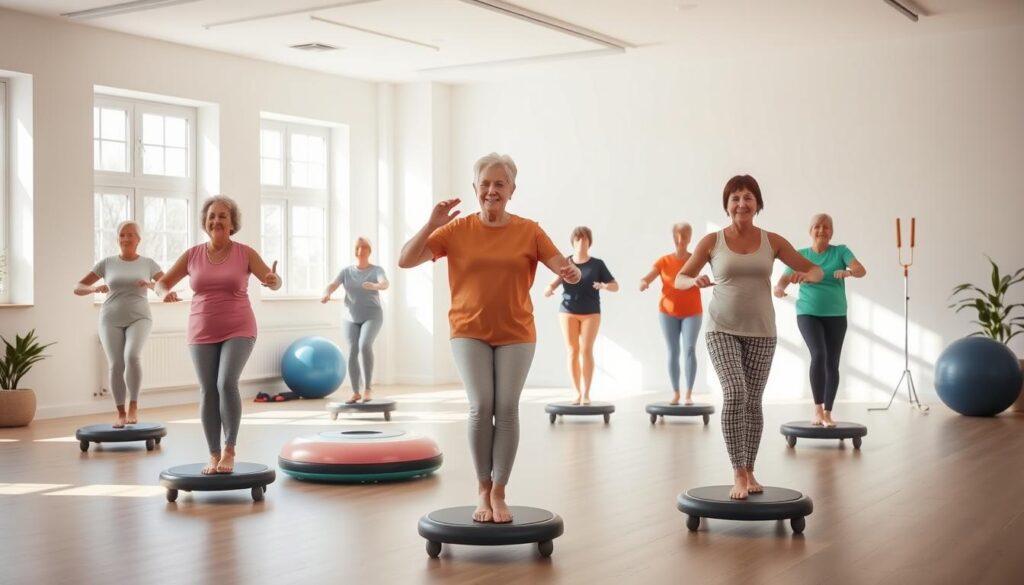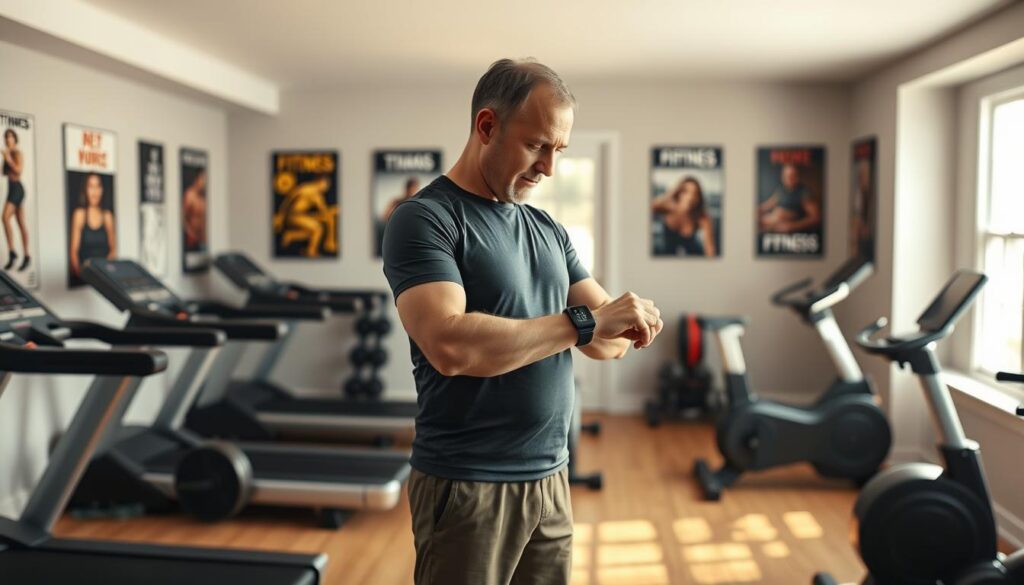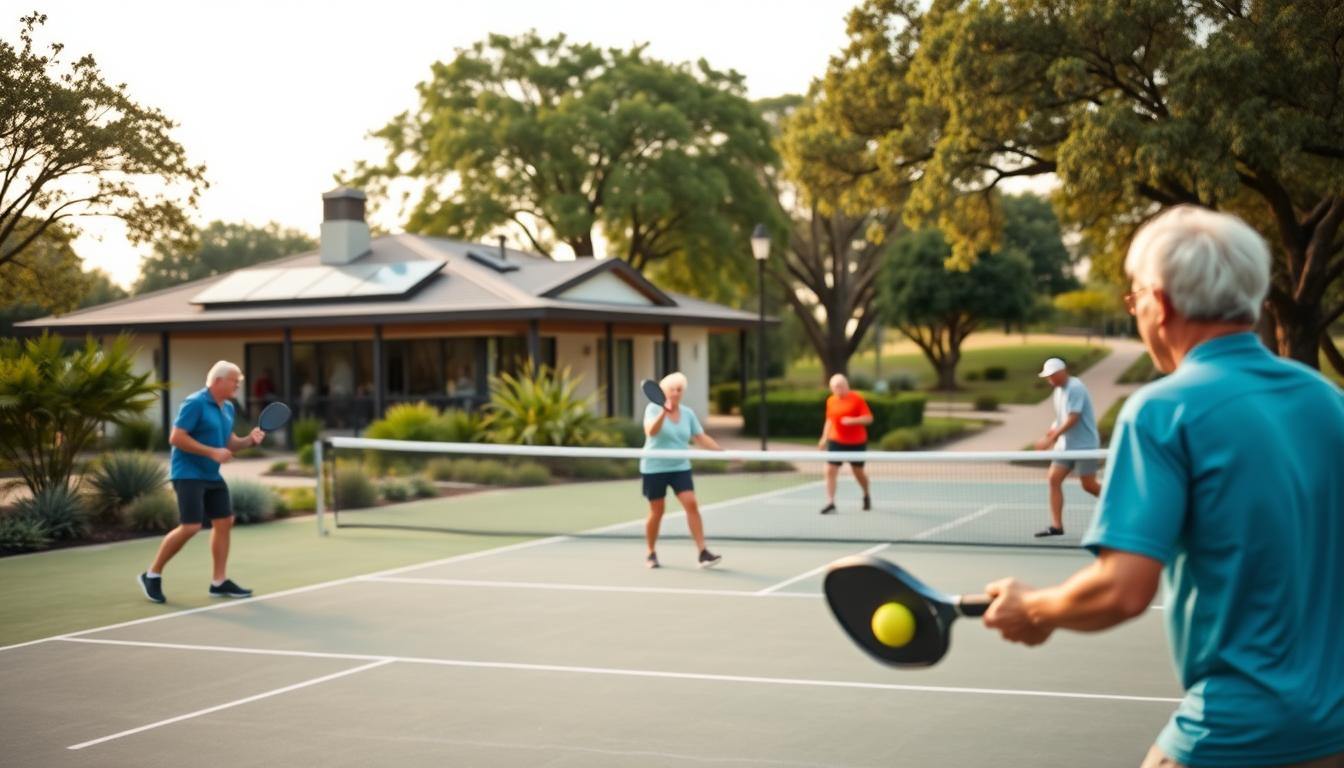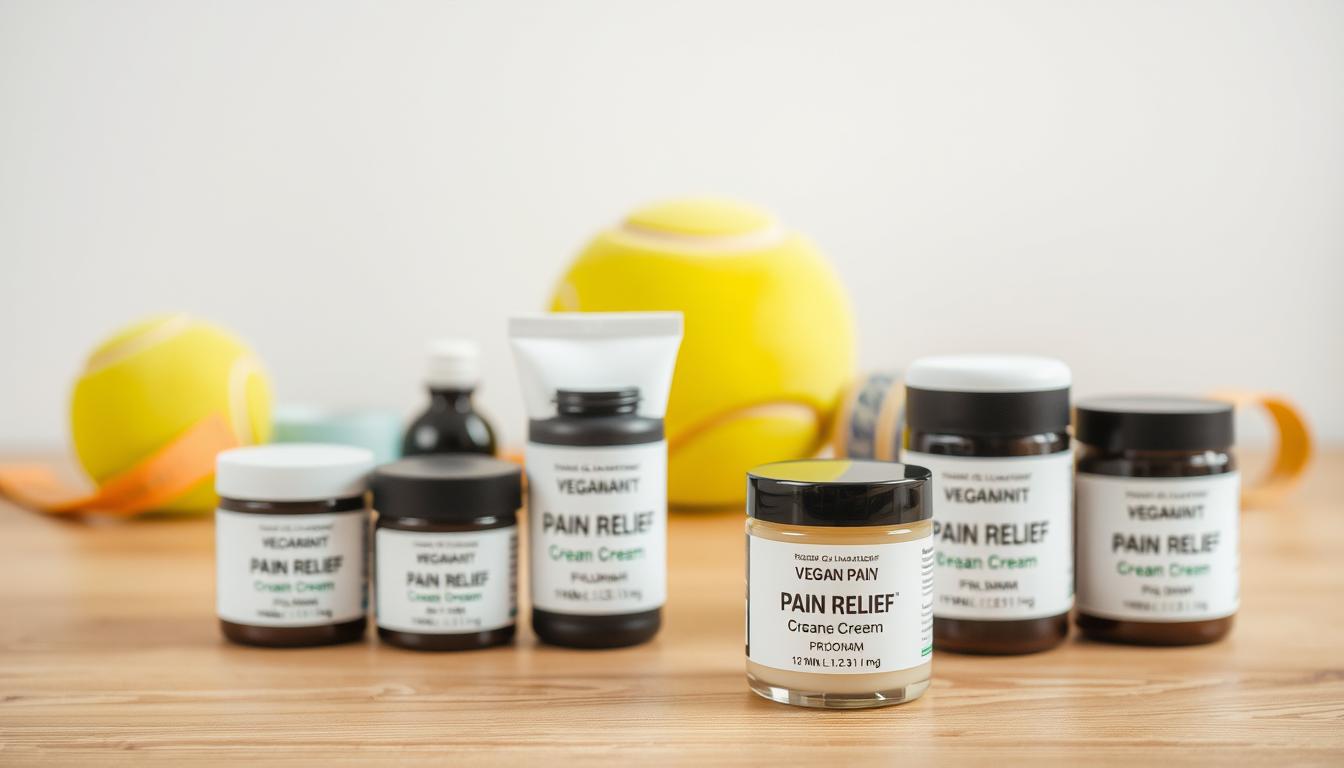Are you ready to unlock your full potential on the pickleball court, regardless of age? Daily mobility drills are not just for professional athletes. They can greatly benefit older pickleball players looking to enhance their performance. By focusing on specific pickleball exercises for seniors, players over 50 can improve flexibility, strength, and overall agility.
This makes them more competitive and reduces the risk of injury. In this article, we will explore essential mobility drills that address the unique physical and mobility needs of older players. Incorporating these targeted drills for seniors can lead to an impressive boost in your game. Get ready to elevate your pickleball skills and enjoy the sport even more!
Introduction to Mobility for Pickleball Players
Mobility is key for pickleball players, especially as they get older. It’s vital to keep and boost mobility as age increases. Doing mobility exercises can greatly improve flexibility, strength, and agility. These are crucial for playing pickleball well.
Adding mobility drills to your routine can enhance your range of motion and quickness. This improves your game and lowers injury risks. Understanding mobility’s role helps older players see its big impact on their game.
Understanding the Importance of Mobility in Pickleball
Mobility is key for pickleball players, especially those over 50. It lets older athletes perform better by boosting flexibility in pickleball and making quick moves. With better mobility, players see big gains in fitness and reaction speed during games.
The Role of Flexibility in Performance
Moving smoothly is linked to better performance. Flexibility in pickleball greatly affects how players move around the court. Having good flexibility lets athletes get to hard shots and react fast to opponents.
This adaptability is key to keeping energy up during games.
Reducing the Risk of Injury through Mobility
Working on mobility is vital for injury prevention for seniors. Better flexibility not only boosts performance but also protects older players from injuries. Strains and sprains are common, especially with age. Being mobile helps lower these risks, letting players enjoy games without worrying about getting hurt.
| Benefits of Mobility | Mobility Impact on Performance |
|---|---|
| Increased flexibility and range of motion | Enhanced shot accuracy |
| Better reaction times | Quick lateral movements |
| Reduced risk of injury | Ability to recover from falls |
| Improved endurance | Sustained energy throughout matches |
Key Muscle Groups Essential for Pickleball
To play pickleball well, you need to focus on three main muscle groups. These are the lower body, core, and upper body. Building strength in these areas helps you play better. Each group is key to moving fast and hitting shots accurately.
Strength in the Lower Extremities
Strong legs and hips are crucial for pickleball. They help you move quickly and hit shots effectively. Having strong quadriceps, hamstrings, and calves keeps you stable and agile.
Importance of Core Stability
A strong core is vital for powerful shots. It helps transfer energy from your legs to your arms, making your swings strong and precise. A stable core also keeps you balanced and quick on your feet.
Upper Body Strength and Endurance
Having strong arms and shoulders is key for long games. They help you hit strong serves and volleys. Regular workouts improve your endurance and performance.
| Muscle Group | Function | Key Benefits for Pickleball |
|---|---|---|
| Lower Body | Power and agility | Improved balance and quick movements |
| Core | Stability and energy transfer | Enhanced shot power and control |
| Upper Body | Strength and endurance | Effectiveness in shot production |
Daily Mobility Drills Older Pickleball Players Should Incorporate
Older pickleball players need daily mobility drills to get better on the court. These exercises help build strength and flexibility. They are key for staying active. Certain drills can boost your game and lower injury risks.
Multi-Planar Lunges for Versatility
Multi-planar lunges are a dynamic exercise that works many muscles. They help players move in different ways and strengthen their legs. This drill improves flexibility and stability on the court.
Kettlebell Swings for Posterior Chain Strength
Kettlebell swings are great for seniors to build strength in the back and legs. They help players stay strong in low positions during games. Regular swings boost endurance and power on the court.
Medicine Ball Overhead Slams for Power
Medicine ball overhead slams are all about explosive power in pickleball. They strengthen the upper body and improve core stability. Adding these slams to your routine can improve your game and reduce injuries.
| Drill | Focus Area | Benefits |
|---|---|---|
| Multi-Planar Lunges | Lower Body Versatility | Improves flexibility and court movement |
| Kettlebell Swings | Posterior Chain Strength | Builds endurance and maintains low positions |
| Medicine Ball Overhead Slams | Explosive Power | Enhances upper body strength and core stability |
Warm-Up Routines to Enhance Flexibility
For older pickleball players, the right warm-up is key. It boosts flexibility and gets the body ready for the game. Using dynamic stretching is a great way to warm up. It gets the heart rate up and prepares the muscles for play.
Dynamic Warm-Ups for Pickleball Matches
Dynamic warm-ups are essential before playing pickleball. They activate muscles and joints. This improves blood flow and mobility.
Try these dynamic warm-ups:
- Leg swings
- Arm circles
- High knees
- Butt kicks
These exercises enhance flexibility. They help players stay at their best during the game.
Static Stretching vs. Dynamic Stretching
Static stretching is not the best for warm-ups. It’s good for cooling down but can make muscles stiff before activity. Dynamic stretching, on the other hand, is better. It prepares muscles for the game through movement.
| Aspect | Static Stretching | Dynamic Stretching |
|---|---|---|
| Temperature of Muscles | Can leave muscles cold | Increases muscle temperature |
| Type of Movement | Stationary | Active movement |
| Impact on Performance | May decrease performance | Enhances performance |
Using dynamic stretching in warm-ups keeps players flexible and injury-free. It gets the body and mind ready for pickleball.
Importance of Balance and Agility Training
For older pickleball players, balance and agility are key. These skills help with footwork and quick changes in direction. They are crucial for success on the court. With balance training, seniors can stay stable during intense games, boosting their performance.
Exercises to Improve Balance on the Court
Good balance exercises keep players stable during play. Here are some activities to try:
- Single-Leg Stand: Holding this position for several seconds strengthens the ankle and knee joints.
- Heel-to-Toe Walk: Walking in a straight line with one foot in front of the other improves coordination.
- Tai Chi Movements: Slow, controlled movements enhance balance and awareness.
Agility Drills for Quick Movements
Agility drills are essential for quick movements on the court. They prepare players for fast actions during games. Here are some drills to consider:
- Lateral Shuffles: This drill boosts speed and agility, making quick sidesteps easier.
- Cone Drills: Set up cones and practice weaving through them. This improves footwork and quickness.
- Box Jumps: This exercise increases power and coordination, perfect for explosive movements.

Integrating Strength Training into Mobility Routines
For older pickleball players, adding strength training to their routines is key. It boosts stability and supports mobility, leading to better court performance. This mix of strength and mobility helps players stay fit and lowers injury risks.
How Strength and Mobility Work Together
Strength training boosts mobility. With more strength, older players move more easily and confidently. Focusing on functional exercises helps build support for daily activities and pickleball. This combo is vital for staying active.
Sample Strength Training Exercises for Older Players
Adding certain exercises to routines can improve strength and mobility. Here are a few examples for seniors:
- Trap Bar Deadlifts: This exercise strengthens the lower body and promotes good lifting form.
- Resistance Training: Using bands or light weights can strengthen muscles without too much strain.
- Bodyweight Squats: A simple yet effective way to build foundational strength and keep flexibility.
Specific Mobility Drills for Upper Body Strength
Upper body mobility drills are key for pickleball players over 50. They boost strength and stability, helping with shots and preventing injuries. These drills focus on the upper back and shoulders, keeping players agile on the court.
TRX Rows for Upper Back Stability
TRX rows work the upper back, crucial for good posture and stability. They strengthen the latissimus dorsi, trapezius, and rhomboids. It’s important to do this exercise correctly:
- Adjust the TRX straps to a manageable height.
- Stand facing the anchor point, holding the handles with straight arms.
- Lean back slightly, ensuring your body forms a straight line from head to heels.
- Pull your body towards the anchor, squeezing your shoulder blades together.
- Lower back to the starting position and repeat.
Shoulder External Rotations to Prevent Injuries
Shoulder external rotations strengthen the shoulder and protect the rotator cuff. You can use resistance bands or light weights:
- Stand or sit with your elbows bent at 90 degrees, arms close to your body.
- Keep your elbows tucked in while rotating your forearms outward.
- Pause at the end of the movement before returning to the starting position.
- Conduct both sides, ensuring even strengthening.
Adding these drills to your routine boosts upper body strength and stability. It also lowers injury risk. Making upper body mobility a priority is essential for pickleball players aiming to improve their game and health.
Lower Body Specific Mobility Exercises
For pickleball players over 50, boosting lower body strength is key. Specific mobility exercises can greatly enhance strength and agility. These exercises focus on areas crucial for performance and stability.
Exercises like trap bar deadlifts and lateral movements are essential. They help maintain balance and improve performance.
Trap Bar Deadlifts for Overall Strength
Trap bar deadlifts work many muscles, making them great for leg strength. They target the glutes, hamstrings, and quadriceps for a full lower body workout. It’s important to use the right form to avoid injury.
- Stand within the trap bar with feet shoulder-width apart.
- Bend at the hips and knees to grip the handles.
- Lower the bar slowly, keeping your back straight.
- Drive through your heels to lift the bar back to standing position.
This exercise not only strengthens muscles but also boosts mobility. It’s perfect for seniors wanting to improve their athletic performance.
Side Steps and Hops for Leg Power
Side steps and hops are great for strengthening leg power. They’re essential for quick movements during games. These exercises improve muscle coordination and functional strength.
- Stand with your feet together, knees slightly bent.
- Step to the side with one foot, bringing the other in to meet it.
- For added challenge, hop instead of stepping, landing softly with bent knees.
Adding side steps and hops to your routine helps keep you agile and balanced. These movements are crucial for pickleball success. They also lower injury risk by improving leg strength and coordination.
Best Practices for Daily Mobility Drills
Adding mobility drills to a daily routine is key for seniors. It boosts physical health and improves pickleball skills. Regular practice builds strength, flexibility, and balance. This helps players reach their fitness goals step by step.
Establishing a Consistent Routine
Having a set plan keeps players on track with their drills. Picking specific days and times helps make it a habit. This way, players see their progress grow, leading to better results.
Sticking to a routine also helps players grow and improve. It creates a space for personal development.
Listening to Your Body’s Needs
Knowing your body’s limits is vital to avoid injuries. Players should pay attention to how they feel during exercises. If tired or sore, it’s okay to adjust the routine.
This approach prevents too much strain and helps players understand their bodies better. It’s all about listening and adapting to your body’s signals.
Cool Down and Recovery Techniques after Drills
For older athletes, cool down techniques are key to recovery. They help the body relax after drills. This is important for lowering heart rates and easing muscle stiffness.
The right recovery practices boost performance. They ensure players are ready for their next match.
Importance of Cooling Down
After hard exercise, the body needs time to rest. Cool down techniques are crucial for seniors. They help prevent dizziness and high heart rates.
They also clear out waste from intense exercise. This is great for pickleball players, who need to move quickly.
Incorporating Stretching into Recovery
Stretching is vital for pickleball players after practice. Gentle stretches keep muscles flexible and prevent injuries. They help keep the muscle length gained during drills.
Focus on muscles used in pickleball, like shoulders, hips, and hamstrings. This keeps players mobile over time.
| Stretching Technique | Target Muscle Group | Duration (seconds) |
|---|---|---|
| Shoulder Stretch | Shoulders | 15-30 |
| Hamstring Stretch | Hamstrings | 15-30 |
| Hip Flexor Stretch | Hips | 15-30 |
| Calf Stretch | Calves | 15-30 |
Tracking Progress in Mobility and Strength
It’s key for older pickleball players to track their fitness progress. This ensures they’re improving in both mobility and strength. By setting clear goals, they can focus on areas needing improvement.
Setting realistic goals helps seniors reach milestones that boost their court performance. This makes their efforts more meaningful and rewarding.
Setting Realistic Goals for Improvement
Setting goals for seniors should focus on steady, lasting progress. It’s vital to break down big goals into smaller, achievable steps. This builds confidence and keeps motivation high.
Here are some tips for setting goals:
- Identify specific areas for improvement, such as balance or upper body strength.
- Track progress through measurable parameters, like the number of successful serves or recovery time after drills.
- Adjust goals periodically based on performance and feedback from routines.
Using Technology to Monitor Fitness Levels
Using technology in pickleball can greatly improve tracking. Many apps and devices offer insights into exercise habits. They show how often you work out, how hard, and how well you recover.
Some useful technologies include:
- Fitness trackers that measure heart rate and calories burned during training sessions.
- Apps that log mobility drills and strength exercises, offering data over time.
- Video analysis tools for assessing and refining technique in movements like serves and volleys.

Incorporating Social Aspects into Mobility Practices
Playing pickleball with others makes it more fun and helps with mobility. Social training for seniors creates a friendly place for players to grow. Local classes and drills help improve both physical health and friendships.
Joining Local Pickleball Classes
Local pickleball classes offer many benefits. You can learn from experts and meet new friends. This social aspect boosts your motivation to keep practicing, which helps your mobility.
By focusing on social training for seniors, we create a welcoming space for everyone to learn and improve.
The Benefits of Partner Drills
Partner drills are great for older players. They help with teamwork and communication, improving skills and mobility. Playing in groups gives you feedback and support, helping you get better.
Group pickleball activities keep you active and let you enjoy time with friends in a supportive environment.
Common Mobility Challenges for Players Over 50
Players over 50 may face mobility challenges in seniors. These challenges can affect their performance on the pickleball court. Aging leads to reduced flexibility, strength, and a higher risk of injury. Understanding these challenges helps older athletes stay active and enjoy their sport.
Aging and Its Effect on Mobility
The aging process can cause a decline in joint flexibility and muscle mass. This impacts a player’s ability to move freely. Joint stiffness often becomes a common issue, reducing the range of motion needed for quick movements during matches.
These factors contribute to mobility challenges in seniors. They can hinder participation in sports, leading to reduced enjoyment and potential withdrawal from activities like pickleball.
Preventive Measures for Common Injuries
To combat the effects of aging in sports, older players should adopt effective injury prevention strategies. Incorporating focused mobility drills into their daily routines can enhance flexibility and strength. Activities such as stretching, strength training, and specific warm-up exercises are essential for maintaining mobility.
These measures not only prevent injuries but also boost confidence. They allow players to perform at their best while enjoying the game.
Conclusion
Incorporating specific daily mobility practices is key for pickleball players over 50. It helps them improve their game and enjoy it more. These practices boost flexibility and strength, reducing injury risks.
Regular exercises prepare seniors for pickleball, giving them the agility and stamina needed. By sticking to a routine, players stay competitive and healthy. This ensures they can keep playing the game they love.
By focusing on mobility drills, senior players can keep enjoying pickleball’s social and physical benefits. It helps them maintain a lifelong passion for the sport.
FAQ
What are mobility drills, and why are they important for older pickleball players?
Mobility drills are special exercises to boost flexibility, strength, and agility. They are key for older pickleball players. They help improve court performance, quicken reaction times, and lower injury risks.
Which muscle groups should older pickleball players focus on to enhance performance?
Older players should focus on three main muscle groups. The lower body for balance and movement, the core for stability, and the upper body for shots. Strengthening these areas boosts performance.
Can mobility drills help with injury prevention in older athletes?
Yes, regular mobility drills can prevent common injuries like sprains and strains. They improve flexibility and strength, reducing pain during games.
What types of mobility drills are recommended for older pickleball players?
Recommended drills include multi-planar lunges, kettlebell swings, and medicine ball overhead slams. These exercises target key areas to enhance performance and reduce injury risks.
How important is warming up before playing pickleball?
Warming up is crucial for older players. It improves flexibility and prepares the body for pickleball’s demands. Dynamic warm-ups mimic game movements, preventing injuries.
What are some effective balance and agility exercises for older pickleball players?
Balance exercises like single-leg stands and stability ball exercises are effective. Agility drills include lateral shuffles and quick footwork. Both improve on-court movement and responsiveness.
How does strength training complement mobility for older athletes?
Strength training boosts mobility by enhancing body stability and support. Exercises like trap bar deadlifts and resistance training help older players maintain strength as they age.
What cool-down practices should older players incorporate after drills?
Older players should cool down by restoring heart rates and stretching. This practice promotes recovery and extends the benefits of mobility drills.
How can older players track their progress in mobility and strength?
Players can track progress by setting realistic goals and using fitness technology. Apps and fitness trackers help monitor workouts and adjust training regimens.
What social benefits can arise from participating in pickleball classes?
Local pickleball classes create a sense of community and motivation. Partner drills and group sessions enhance mobility and foster supportive networks. This leads to improved performance and enjoyment.




